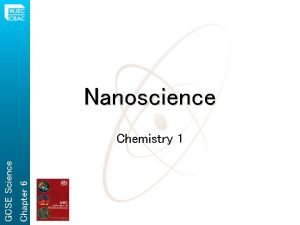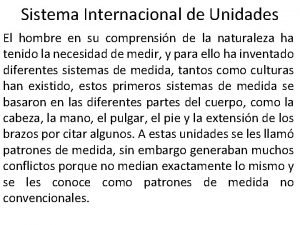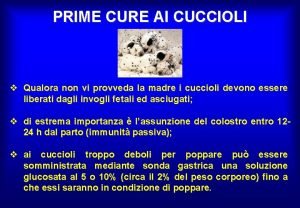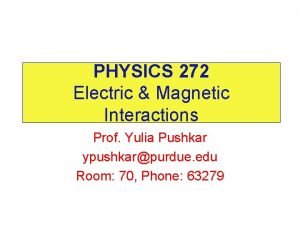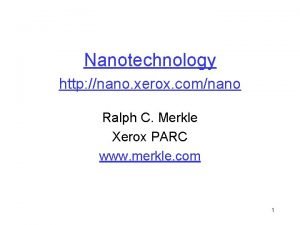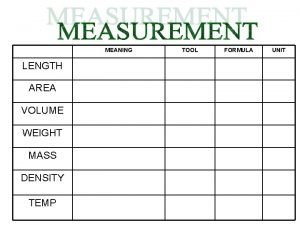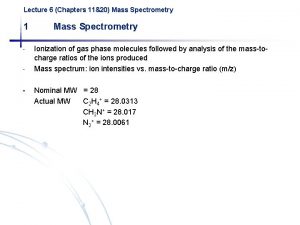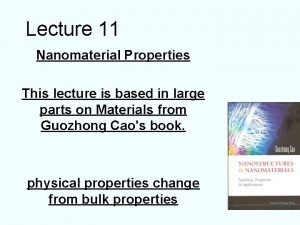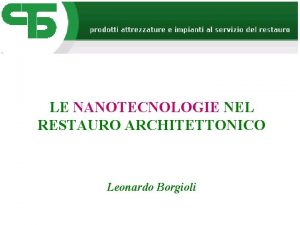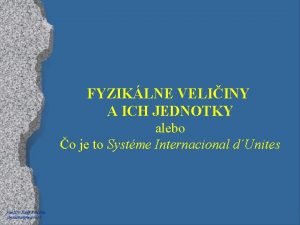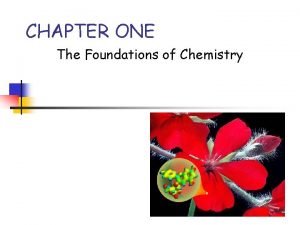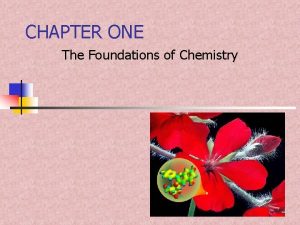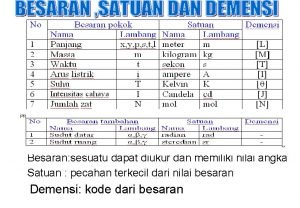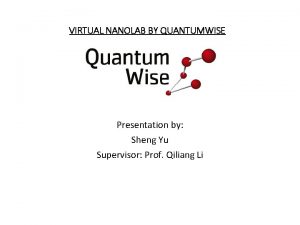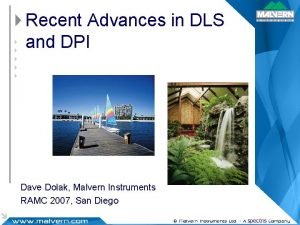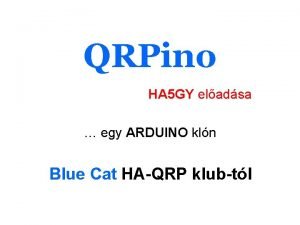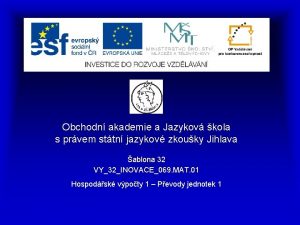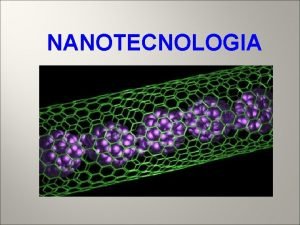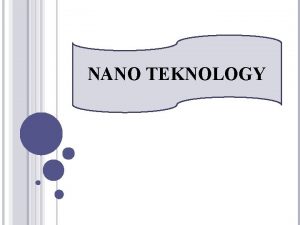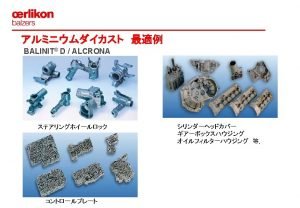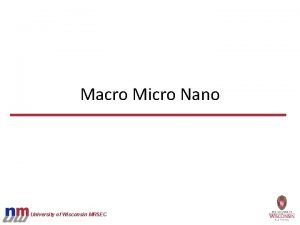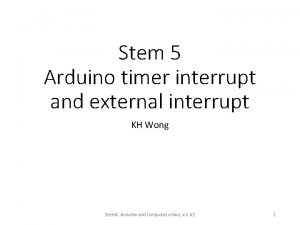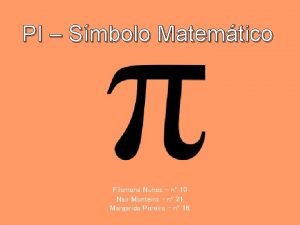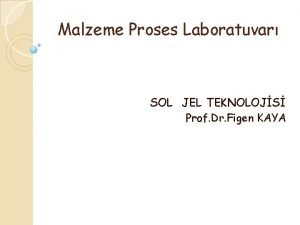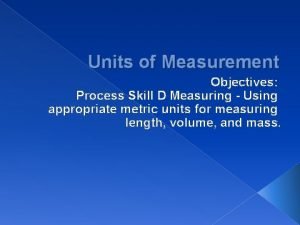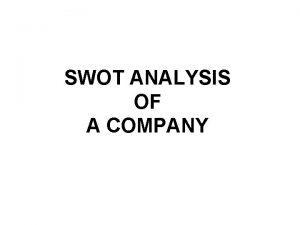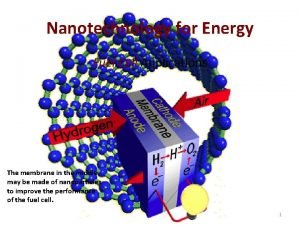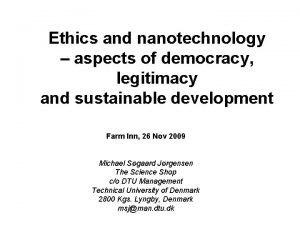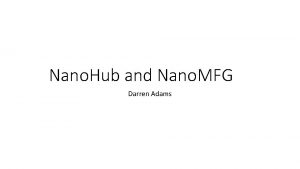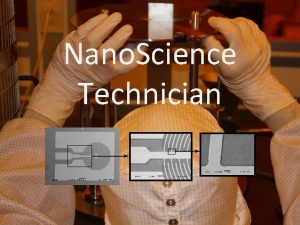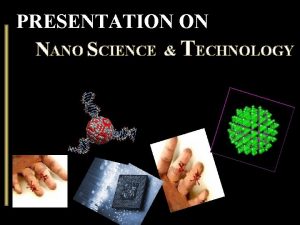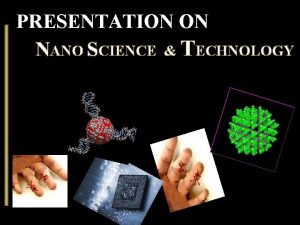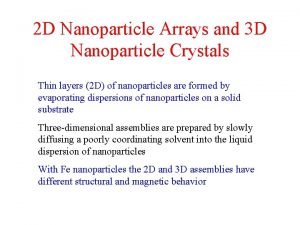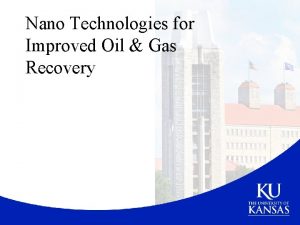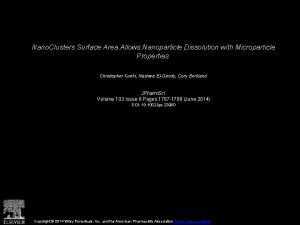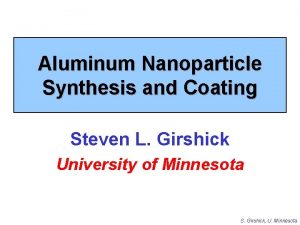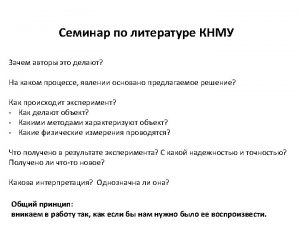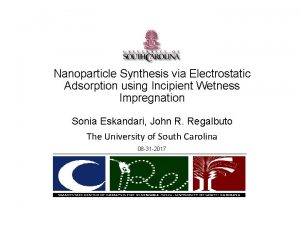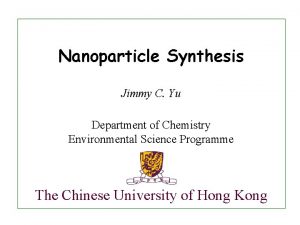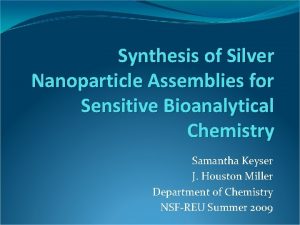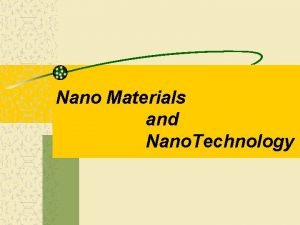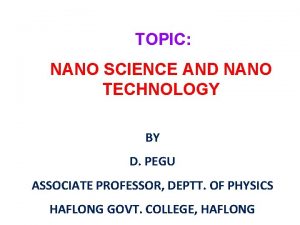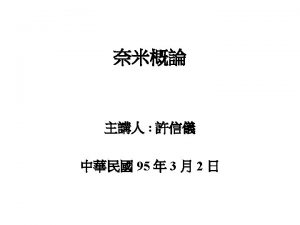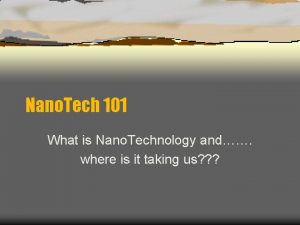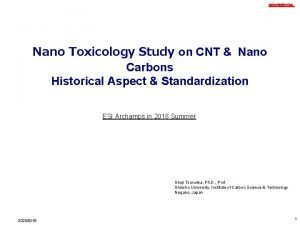Nanoparticle Synthesis and Applications www nano 4 me
























































- Slides: 56

Nanoparticle Synthesis and Applications www. nano 4 me. org © 2018 The Pennsylvania State University Nanoparticle Synthesis and Applications 1

Outline • Nanoparticle Synthesis – – – Colloidal Chemical Methods Attrition Pyrolysis RF Plasma Thermal decomposition Pulsed Laser Method • Some Nanoparticle Applications www. nano 4 me. org © 2018 The Pennsylvania State University Nanoparticle Synthesis and Applications 2

Colloidal Methods • Colloidal chemical methods are some of the most useful, easiest, and cheapest ways to create nanoparticles. • Colloidal methods may utilize both organic and inorganic reactants. • Typically, a metal salt is reduced leaving nanoparticles evenly dispersed in a liquid. • Aggregation is prevented by electrostatic repulsion or the introduction of a stabilizing reagent that coats the particle surfaces. • Particle sizes range from 1 -200 nm and are controlled by the initial concentrations of the reactants and the action of the stabilizing reagent. www. nano 4 me. org © 2018 The Pennsylvania State University Nanoparticle Synthesis and Applications 3

Colloidal Methods • Examples: Gold – A common method for preparing colloidal gold nanoparticles involves combining hydrogen tetrachloroaurate (HAu. Cl 4) and sodium citrate (Na 3 C 6 H 5 O 7) in a dilute solution. – Upon dissociation, the citrate ions (C 6 H 5 O 73 -) reduce Au 3+ to yield 30 -40 nm gold particles. Half reaction equations: • Au 3+(aq) + 3 e- Au(s) • C 6 H 5 O 73 -(aq) +H 2 O(l) C 5 H 4 O 42 -(aq) + CO 2(g) + H 3 O(aq) + 2 e- www. nano 4 me. org © 2018 The Pennsylvania State University Nanoparticle Synthesis and Applications 4

Example: Formation of Gold Nanoparticles Sodium Citrate HAu. Cl 4 Red Color = Gold NP HAu. Cl 4 Gold NP Heat 1. Heat a solution of chloroauric acid (HAu. Cl 4) up to reflux (boiling). HAu. Cl 4 is a water soluble gold salt. 2. Add trisodium citrate, which is a reducing agent. 3. Continue stirring and heating for about 10 minutes. • During this time, the sodium citrate reduces the gold salt (Au 3+) to metallic gold (Au 0). • The neutral gold atoms aggregate into seed crystals. • The seed crystals continue to grow and eventually form gold nanoparticles. http: //mrsec. wisc. edu/Edetc/nanolab/gold/index. html J. Chem. Ed. 2004, 81, 544 A. www. nano 4 me. org © 2018 The Pennsylvania State University Nanoparticle Synthesis and Applications 5

Example: Formation of Gold Nanoparticles Reduction of gold ions: Au(III) + 3 e- → Au(0) Nucleation of Au(0) seed crystals: Seed Crystal 10’s to 100’s of Atoms Growth of nanoparticles: Isotropic Growth Spherical Nanoparticles Surface capped with citrate anions Seed Anisotropic Growth www. nano 4 me. org Nanorods © 2018 The Pennsylvania State University Adding surfactant to growth solution caps certain crystal faces and promotes growth only in selected directions. Nanoparticle Synthesis and Applications 6

Colloidial Methods • Examples: Molybdenum – 1 -5 nm molybdenum nanoparticles can be created at room temperature by reducing Mo. Cl 3 in a toluene solution in the presence of sodium triethylborohydride (Na. BEt 3 H). – Reaction equation: Mo. Cl 3 + 3 Na. BEt 3 H Mo + 3 Na. Cl + 3 BEt 3 + (3/2)H 2 www. nano 4 me. org © 2018 The Pennsylvania State University Nanoparticle Synthesis and Applications 7

Colloidal Methods • Examples: Iron – The TEM image to the right shows 3 nm Fe nanoparticles produced by reducing Fe. Cl 2 with sodium borohydride (Na. BH 4) in xylene. – Trioctylphosphine oxide (TOPO) was introduced as a capping agent to prevent oxidation and aggregation TEM image of Fe nanoparticles Phys. Chem. Phys. , 2001, 3, 1661È1665 www. nano 4 me. org © 2018 The Pennsylvania State University Nanoparticle Synthesis and Applications 8

Colloidal Methods • Examples: Silver – The reduction of Ag. NO 3 by Na. BH 4 in aqueous solution can produce small diameter (<5 nm) silver nanoparticles – In one reported method, the reduction takes place between layers of kaolinite, a layered silicate clay material that functions to limit particle growth. – Dimethyl sulfoxide (DMSO) is used as a capping agent to prevent corrosion and aggregation of the Ag particles. R. Patakfalvi et al. / Colloids and Surfaces A: Physicochem. Eng. Aspects 220 (2003) 45/54 www. nano 4 me. org © 2018 The Pennsylvania State University Nanoparticle Synthesis and Applications 9

Attrition • Attrition is a mechanical method for creating certain types of nanoparticles. • Macro or micro scale particles are ground in a ball mill, a planetary ball mill, or other size reducing mechanism. • The resulting particles are separated by filters and recovered. • Particle sizes range from tens to hundreds of nm. • Broad size distribution and varied particle geometry. • May contain defects and impurities from the milling process. • Generally considered to be very energy intensive. Cao, Guozhong. Nanostructures and Nanomaterials: Synthesis, Properties & Applications. Imperial College Press. 2004 www. nano 4 me. org © 2018 The Pennsylvania State University Nanoparticle Synthesis and Applications 10

Attrition: Rotary Ball Mill • A hollow steel cylinder containing tungsten balls and a solid precursor rotates about its central axis. • Particle size is reduced by brittle fracturing resulting from ball-ball and ball-wall collisions. • Milling takes place in an inert gas atmosphere to reduce contamination. http: //www. ktf-split. hr/glossary/image/ball_mill. gif www. nano 4 me. org © 2018 The Pennsylvania State University Nanoparticle Synthesis and Applications 11

Attrition • Attrition Examples Claudio L. De Castro, Brian S. Mitchell. Nanoparticles from Mechanical Attrition. Department of Chemical Engineering, Tulane University, New Orleans, Louisiana, USA www. nano 4 me. org © 2018 The Pennsylvania State University Nanoparticle Synthesis and Applications 12

Outline • Nanoparticle Synthesis – – – Colloidal Chemical Methods Attrition Pyrolysis RF Plasma Thermal Decomposition Pulsed Laser Method • Nanoparticle Applications www. nano 4 me. org © 2018 The Pennsylvania State University Nanoparticle Synthesis and Applications 13

Pyrolysis • • • History System Overview Aggregation and agglomeration Impact of oxygen flow Jet design Flame quenching • Nozzle quenching • Electrostatic Charging www. nano 4 me. org © 2018 The Pennsylvania State University Nanoparticle Synthesis and Applications 14

Pyrolysis: Material Applications Ti. O 2 Tires Optical fibers Paints Si. O 2 Carbon Black Makeup Inks www. nano 4 me. org Flowing aid Images clockwise from top left: 1. Tire <www. Safercar. gov> 2. Paint cans <http: //www. ndhealth. gov/wm/Pollution. Prevention. And. Recycling. Program/ Mercury. Containing. Devices. Products. htm> 3. Optical Fibers <https: //lasers. llnl. gov/publications/photons_fusion/2009/january _february. php> 4. Vitamans <www. fda. gov/About. FDA/What. We. Do/History/This. Week/ucm 117726. htm> 5. Makeup <https: //pa-online. pa. gov. sg/NASApp/sdsol/common /Bring_Out_Best_In_You. htm> 6. Ink Quil < http: //www. orovalleyaz. gov/Town_Government/Town_Clerk/notary_services. htm> © 2018 The Pennsylvania State University Nanoparticle Synthesis and Applications 15

Annual Production of Flame made materials • Carbon black – 8 million tons $8 billion • Ti. O 2 - 2. 5 million tons, $5 billion • Si. O 2 2. 0 million tons, $2 billion www. nano 4 me. org © 2018 The Pennsylvania State University Nanoparticle Synthesis and Applications 16

Pratsinis, Sotiris E. , Functional Nanoparticles and Films Made in the Gasphase. Nano Science and Technology Institute, Cambridge. 2008 www. nano 4 me. org © 2018 The Pennsylvania State University Nanoparticle Synthesis and Applications 17

Pratsinis, Sotiris E. , Functional Nanoparticles and Films Made in the Gasphase. Nano Science and Technology Institute, Cambridge. 2008 www. nano 4 me. org © 2018 The Pennsylvania State University Nanoparticle Synthesis and Applications 18

Pyrolysis • Pyrolysis is a popular method for creating nanoparticles, especially oxides. A precursor (liquid or gas) is forced through an orifice at high pressure and burned. • The resulting ash is collected to recover the nanoparticles. • Large volume of gas leads to high rate of material synthesis www. nano 4 me. org © 2018 The Pennsylvania State University Nanoparticle Synthesis and Applications 19

Flame Spray Pyrolysis (FSP) • Versatile • Large Variety of precursors • Controllable Aggregation Condensation Coagulation Nucleation • Scalable Droplet evaporation www. nano 4 me. org © 2018 The Pennsylvania State University Nanoparticle Synthesis and Applications 20

Pyrolysis: System Overview Xiao Q. , Yiguang J. , Stefan B. and Nan Y. Synthesis of Y 2 O 3: Eu Phosphor Nanoparticles by Flame Spray Pyrolysis. Princeton University, Princeton, NJ www. nano 4 me. org © 2018 The Pennsylvania State University Nanoparticle Synthesis and Applications 21

Pyrolysis Aggregates and Agglomerates: • • • Aggregate – An assemblage of particles rigidly joined together by chemical or sinter-forces. Agglomerate – A loosely coherent assembly of particles and/or aggregates held together by weak interactions Current aerosol instruments cannot distinguish between them. Aggregates www. nano 4 me. org Agglomerates © 2018 The Pennsylvania State University Nanoparticle Synthesis and Applications 22

Pyrolysis Agglomerate Formation Sequence Ti. O 2 Transient Hard Monomers Agglomerates Spherical Particles Hard Agglomerates Soft Agglomerates Residence time www. nano 4 me. org © 2018 The Pennsylvania State University Nanoparticle Synthesis and Applications 23

Pyrolysis Degree of agglomeration matters: • Agglomerated - Fillers Catalysts Lightguide preforms Particles for CMP • Non-agglomerated - Pigments Composites Electronics • Distinction between hard and soft agglomerates is largely empirical. • Controlled agglomeration can minimize post-grinding and other costly separation techniques. Pratsinis, Sotiris E. , Functional Nanoparticles and Films Made in the Gasphase. Nano Science and Technology Institute, Cambridge. 2008 www. nano 4 me. org © 2018 The Pennsylvania State University Nanoparticle Synthesis and Applications 24

Pyrolysis Regions of Agglomeration Non-Agglomerates Hard Agglomerates Soft Agglomerates www. nano 4 me. org © 2018 The Pennsylvania State University Pratsinis, Sotiris E. , Functional Nanoparticles and Films Made in the Gasphase. Nano Science and Technology Institute, Cambridge. 2008 Nanoparticle Synthesis and Applications 25

Pyrolysis www. nano 4 me. org © 2018 The Pennsylvania State University Nanoparticle Synthesis and Applications 26

Pyrolysis Impact of oxygen • Aids in combustion • Provides chemistry in the reaction • Acts as a dilutent, cools the flame, prevents agglomeration • All of these variables can be decoupled by burner design. Which is cheaper than increasing oxygen flow. www. nano 4 me. org © 2018 The Pennsylvania State University Nanoparticle Synthesis and Applications 27

Pyrolysis Particle Size Controlled by O 2 Flow • Excess oxygen makes the flame burn cooler resulting in smaller diameter particles

Pyrolysis Particle Formation and Growth by Gas Phase Chemical Reaction, Coagulation, Sintering and Surface Growth: O 2 TTIP Molecules Ti. O 2 Molecules Titanium-Tetra-Iso-Propoxide C 3 H 7 O Ti. O 2 Particles Ti. O 2 Aggregates Decreasing Temperature OC 3 H 7 Ti C 3 H 7 O OC 3 H 7 Pratsinis, Sotiris E. , Functional Nanoparticles and Films Made in the Gasphase. Nano Science and Technology Institute, Cambridge. 2008 www. nano 4 me. org © 2018 The Pennsylvania State University Nanoparticle Synthesis and Applications 29

Pyrolysis: Jet Design CH 4 Air Air www. nano 4 me. org Air CH 4 Air Ti. Cl 4 © 2018 The Pennsylvania State University Ti. Cl 4 Nanoparticle Synthesis and Applications 30

Pyrolysis: Jet Design Effect of Oxidant Composition on Ti. O 2 Morphology: Flame mixing C Flame mixing B Oxidant CH 4 Oxidant Ti. Cl 4 www. nano 4 me. org © 2018 The Pennsylvania State University Nanoparticle Synthesis and Applications 31

Pyrolysis: Nozzle Quenching Desired • Flame length is controlled by rapid quenching • Prevents agglomeration by inhibiting growth processes in the early stages of growth. • Provides precise control of particle size Vapor Pratsinis, Sotiris E. , Functional Nanoparticles and Films Made in the Gasphase. Nano Science and Technology Institute, Cambridge. 2008 www. nano 4 me. org © 2018 The Pennsylvania State University Nanoparticle Synthesis and Applications 32

Pyrolysis: Nozzle Quenching controls flame length and particle size.

Pyrolysis: Nozzle Quenching Ti. O 2 Particle Size Control by Nozzle Quenching Pratsinis, Sotiris E. , Functional Nanoparticles and Films Made in the Gasphase. Nano Science and Technology Institute, Cambridge. 2008 www. nano 4 me. org © 2018 The Pennsylvania State University Nanoparticle Synthesis and Applications 34

Pyrolysis: Electrostatic Charging • Particle size can also be controlled by generating an electric field across the flame. • A large electric field (hundreds of k. V/m) is generated between two plate electrodes situated on opposite sides of the flame. • Similar to nozzle quenching, the electric field limits particle growth by reducing the residence time in the high temperature region of the flame. • In addition, the electric field charges the particles. This results in electrostatic repulsion between newly formed particles, preventing coagulation. S. Vemury, S. E. Pratsinis, L. Kibbey, Electrically-controlled flame synthesis of nanophase Ti. O 2, Si. O 2, and Sn. O 2 powders. JMR, Vol. 12, 1031 -1042. 1997. www. nano 4 me. org © 2018 The Pennsylvania State University Nanoparticle Synthesis and Applications 35

Pyrolysis: Electrostatic Charging www. nano 4 me. org © 2018 The Pennsylvania State University Nanoparticle Synthesis and Applications 36

Pyrolysis: Advantages & Disadvantages • Pyrolysis is a high yield method that can fulfill the strong demand for nanoparticles. • Can be customized to produce unique nanoparticles. • Broad distribution of particle sizes and morphology. www. nano 4 me. org © 2018 The Pennsylvania State University Nanoparticle Synthesis and Applications 37

Outline • Nanoparticle Synthesis – – – Colloidal Chemical Methods Attrition Pyrolysis RF Plasma Thermal Decomposition Pulsed Laser Method • Nanoparticle Applications www. nano 4 me. org © 2018 The Pennsylvania State University Nanoparticle Synthesis and Applications 38

RF Plasma Synthesis • The starting material is placed in a pestle and heated under vacuum by RF heating coils. • A high temperature plasma is created by flowing a gas, such as He, through the system in the vicinity of the coils. • When the material is heated beyond its evaporation point, the vapor nucleates on the gas atoms which diffuse up to a cooler collector rod and form nanoparticles. • The particles can be passivated by introducing another gas such as O 2. • In the case of Al nanoparticles the O 2 forms a thin layer of Al. O 3 around the outside of the particle inhibiting aggregation and agglomeration. • RF plasma synthesis is very popular method for creating ceramic nanoparticles and powders • Low mass yield. Poole, C. , Owens, F. Introduction to Nanotechnology. Wiley, New Jersey. 2003 www. nano 4 me. org © 2018 The Pennsylvania State University Nanoparticle Synthesis and Applications 39

RF Plasma Apparatus Poole, C. , Owens, F. Introduction to Nanotechnology. Wiley, New Jersey. 2003 www. nano 4 me. org © 2018 The Pennsylvania State University Nanoparticle Synthesis and Applications 40

Thermal Decomposition • Thermal decomposition is the chemical decomposition of a substance into ins constituents by heating. • A solid bulk material is heated beyond its decomposition temperature in an evacuated furnace tube. • The precursor material may contain metal cations and molecular anions, or metal organic solids. • Example: 2 Li. N 3(s) 2 Li(s) +3 N 2(g) – Lithium particles can be synthesized by heating Li. N 3 in a quartz tube under vacuum. – When heated to 375 o. C the nitrogen outgases from the bulk material and the Li atoms coalesce to form metal nanoparticles. Poole, C. , Owens, F. Introduction to Nanotechnology. Wiley, New Jersey. 2003 www. nano 4 me. org © 2018 The Pennsylvania State University Nanoparticle Synthesis and Applications 41

Thermal Decomposition Apparatus Sample in Ta foil Furnace Evacuated Quartz Tube Turbo Molecular Pump Mechanical Pump www. nano 4 me. org © 2018 The Pennsylvania State University Nanoparticle Synthesis and Applications 42

Outline • Nanoparticle Synthesis – – – Colloidal Chemical Methods Attrition Pyrolysis RF Plasma Thermal Decomposition Pulsed Laser Methods • Nanoparticle Applications www. nano 4 me. org © 2018 The Pennsylvania State University Nanoparticle Synthesis and Applications 43

Pulsed Laser Methods • Pulsed Lasers have been employed in the synthesis silver nanoparticles from silver nitrate solutions. • A disc rotates in this solution while a laser beam is pulsed onto the disc creating hot spots. • Silver nitrate is reduced, forming silver nanoparticles. • The size of the particle is controlled by the energy in the laser and the speed of the rotating disc. Poole, C. , Owens, F. Introduction to Nanotechnology. Wiley, New Jersey. 2003 www. nano 4 me. org © 2018 The Pennsylvania State University Nanoparticle Synthesis and Applications 44

Pulsed Laser Apparatus for Ag Nanoparticles Poole, C. , Owens, F. Introduction to Nanotechnology. Wiley, New Jersey. 2003 www. nano 4 me. org © 2018 The Pennsylvania State University Nanoparticle Synthesis and Applications 45

Nanoparticle Applications: Zn. O • Zinc Oxide has opaque and antifungal properties. • Used as UV blocking pigments in sunscreens, cosmetics, varnishes, and fabrics • Incorporated in foot powders and garden supplies as an antifungal. • Zn. O nanowires can improve the elastic toughness of bulk materials www. nano 4 me. org © 2018 The Pennsylvania State University Nanoparticle Synthesis and Applications 46

Nanoparticle Applications: Ti. O 2 • Titanium Dioxide is used as an inorganic white pigment for paper, paints, plastics, and whitening agents. • Ti. O 2 nanoparticles are used as UV blocking pigments in sunscreens, cosmetics, varnishes, and fabrics. • Ti. O 2 has unique photocatalytic properties that make it suitable for a number of advanced applications: – – Self-cleaning glass and antifogging coatings Photoelectrochemical cells (PECs) Detoxification of waste water Hydrolysis www. nano 4 me. org © 2018 The Pennsylvania State University Nanoparticle Synthesis and Applications 47

Nanoparticle Applications: Fe • 50 -100 nm Iron nanoparticles are used in magnetic recording devices for both digital and analog data. • Decreasing the diameter to 30 -40 nm increases the magnetic recording capacity by 5 -10 times per unit. www. nano 4 me. org © 2018 The Pennsylvania State University Nanoparticle Synthesis and Applications 48

Nanoparticle Applications: Iron Oxide • Iron Oxide nanoparticles have unique magnetic and optical properties. • Iron oxide nanoparticles can be translucent to visible light while being opaque to UV light. • Applications include UV protective coatings, various electromagnetic uses, electro-optic uses, and data storage. www. nano 4 me. org © 2018 The Pennsylvania State University Nanoparticle Synthesis and Applications 49

Nanoparticle Applications: Iron Alloys • Iron-platinum nanoparticles have increased magnetism and it is predicted that 3 nm particle can increase the data storage capacity by 10 times per unit area. • Iron-palladium nanoparticles 100 -200 nm in diameter have been shown to reduce toxic chlorinated hydrocarbons to nontoxic hydrocarbon and chloride compounds. SCIENCE VOL 287 17 MARCH 2000 www. nano 4 me. org © 2018 The Pennsylvania State University Nanoparticle Synthesis and Applications 50

Nanoparticle Applications: Alumina • Alumina (Aluminum Oxide) is used in Chemical Mechanical Polishing (CMP) slurries, as well as ceramic filters. • Nano-alumina is used in light bulb and fluorescent tube coatings because it emits light more uniformly and allows for better flow of fluorescent materials. www. nano 4 me. org © 2018 The Pennsylvania State University Nanoparticle Synthesis and Applications 51

Nanoparticle Applications: Ag • Silver has excellent conductivity and has been used as an antimicrobial material for thousands of years. • Silver’s anti-microbial potential increase with increased surface area. • Applications include biocides, transparent conductive inks, and antimicrobial plastics, and bandages. www. nano 4 me. org © 2018 The Pennsylvania State University Nanoparticle Synthesis and Applications 52

Nanoparticle Applications: Gold • Gold nanoparticles are relatively easy to produce compared to other types of nanoparticles due to its high chemical stability. • Uses for gold nanoparticles are typically catalytic and include DNA detection and the oxidation of carbon monoxide. • Gold has superior conductivity allowing gold nanoparticles to be used in various probes, sensors, and optical applications. www. nano 4 me. org © 2018 The Pennsylvania State University Nanoparticle Synthesis and Applications 53

Nanoparticle Applications: Gold • The First Response® home pregnancy test uses 1µm polystyrene sphere and 50 nm gold particles coated with an antibody to human chorionic gonadotropin (h. CG), a hormone produced during pregnancy. • When urine containing h. CG comes in contact with the polystyrene-gold-antibody complex, the nanoparticles coagulate into red clumps. Fluids pass through a filter where the clumps are caught yielding a pink filter. • Suspended (un-coagulated) nanoparticles pass through the filter and no color change occurs. Bangs, L. B. New Developments in Particle-based Immunoassays. Pure & Appl. Chem. Vol. 68, No 10 p 1873 -1879. 1996 www. nano 4 me. org © 2018 The Pennsylvania State University Nanoparticle Synthesis and Applications 54

Nanoparticle Applications: Gold www. nano 4 me. org © 2018 The Pennsylvania State University Bangs, L. B. New Developments in Particle-based Immunoassays. Pure & Appl. Chem. Vol. 68, No 10 p 1873 -1879. 1996 Nanoparticle Synthesis and Applications 55

Nanoparticle Applications: Zr. O • Zirconium Dioxide nanoparticles can increase the tensile strength of materials when applied as a coating. • This has many possible applications in wear coatings, ceramics, dies, cutting edges, as well as piezoelectric components, and dielectrics. www. nano 4 me. org © 2018 The Pennsylvania State University Nanoparticle Synthesis and Applications 56
 Nanoscience gcse
Nanoscience gcse Bio 222
Bio 222 3 868 000 000 in scientific notation
3 868 000 000 in scientific notation Micro nano pico coulomb
Micro nano pico coulomb Nano teknoloji zırh
Nano teknoloji zırh Tabella peso barboncino nano
Tabella peso barboncino nano Purdue phys 272
Purdue phys 272 Mili mikro nano piko
Mili mikro nano piko Nano norgesgruppen login
Nano norgesgruppen login Xrox nano
Xrox nano Concept of nano programming
Concept of nano programming John summerscales
John summerscales Film
Film Nanogears
Nanogears Centi milli deci
Centi milli deci Nano esi
Nano esi Hardness of nanomaterials
Hardness of nanomaterials Leonardo borgioli
Leonardo borgioli Jednotky kilo mega giga
Jednotky kilo mega giga Nano diaz
Nano diaz Mega micro nano
Mega micro nano Unit factor method
Unit factor method Milli chemistry
Milli chemistry Awalan satuan besaran fisika dan teknik
Awalan satuan besaran fisika dan teknik Atemega 328
Atemega 328 2beens
2beens Nano piko mikro
Nano piko mikro Virtual nanolab
Virtual nanolab Mm micro nano pico
Mm micro nano pico Dls
Dls Arduino nano programozás
Arduino nano programozás Hektar na m2
Hektar na m2 Nano vna
Nano vna Nano
Nano Pengertian teknologi nano
Pengertian teknologi nano Måleenheter vekt usa
Måleenheter vekt usa Balinit futura
Balinit futura Nano piko mikro
Nano piko mikro Micro
Micro Teknologi nano adalah
Teknologi nano adalah Lifepak nano
Lifepak nano Nano piko mikro
Nano piko mikro Arduino timerinterrupt
Arduino timerinterrupt Nano letra grega
Nano letra grega Arduino nano scratch
Arduino nano scratch Measurements definition
Measurements definition Alkoksit
Alkoksit Pico notation
Pico notation Sơ đồ chân arduino nano
Sơ đồ chân arduino nano Unp nano
Unp nano Mega vs giga
Mega vs giga Jaguar swot analysis
Jaguar swot analysis S4a instalar
S4a instalar Nano education
Nano education Nano si
Nano si Dott nano giuseppe
Dott nano giuseppe Silver nano health system samsung
Silver nano health system samsung
